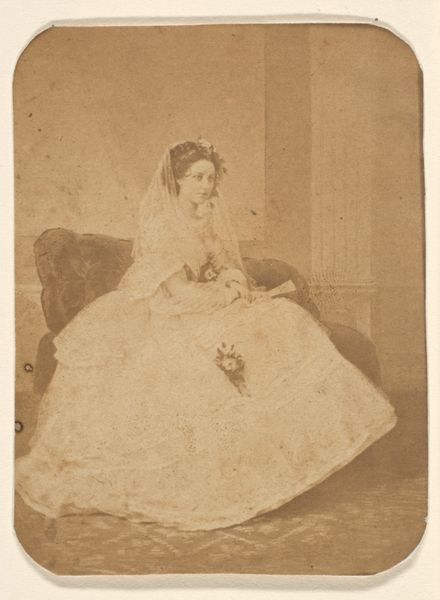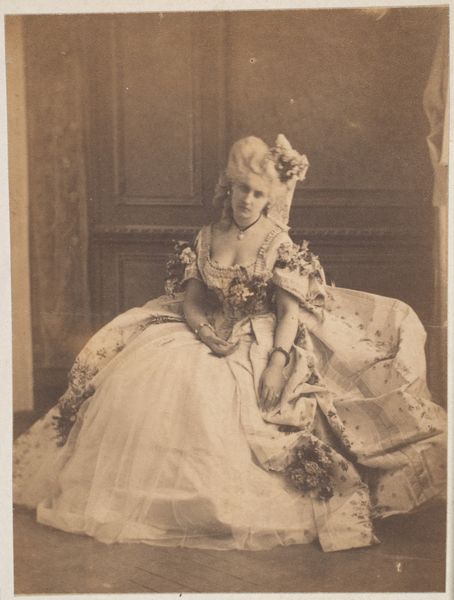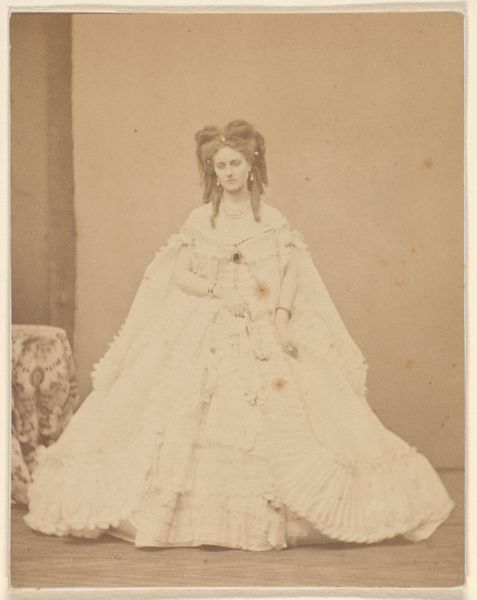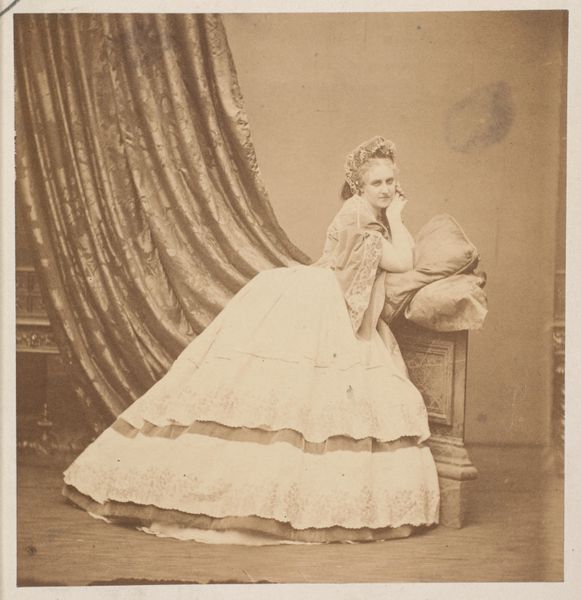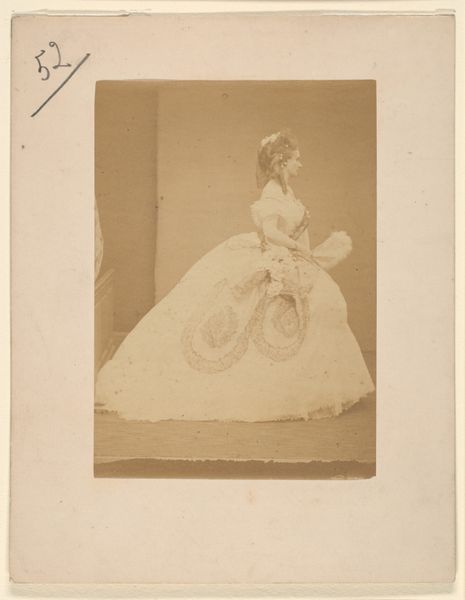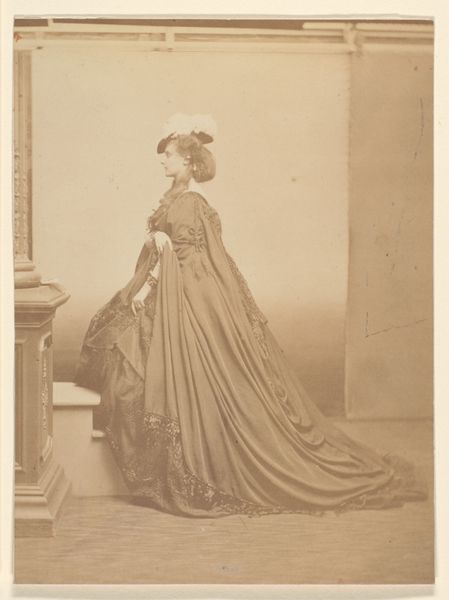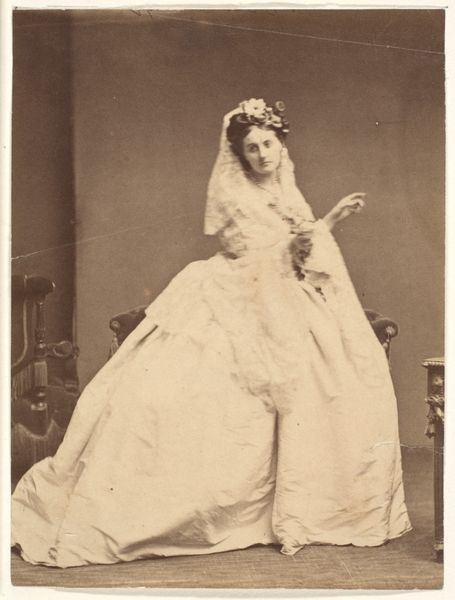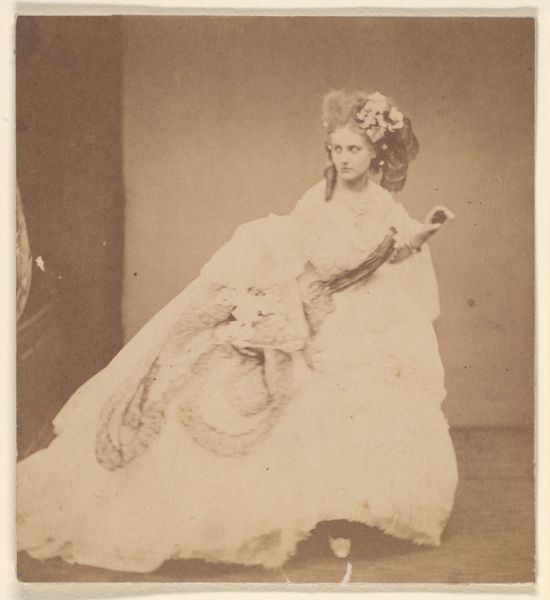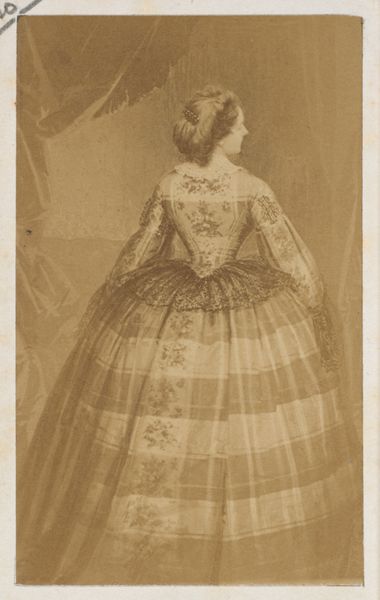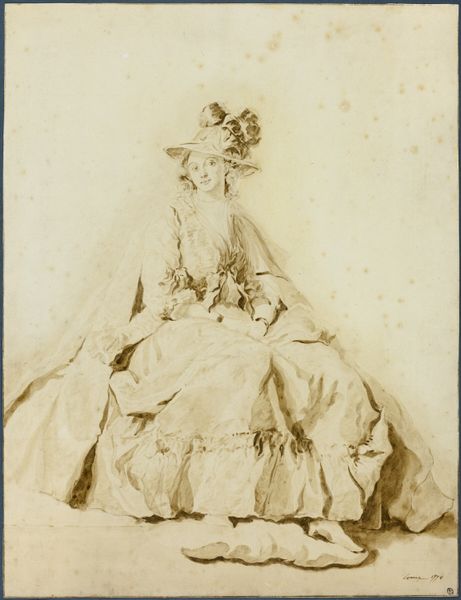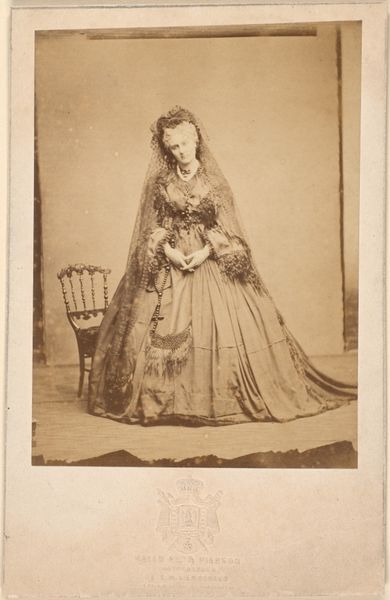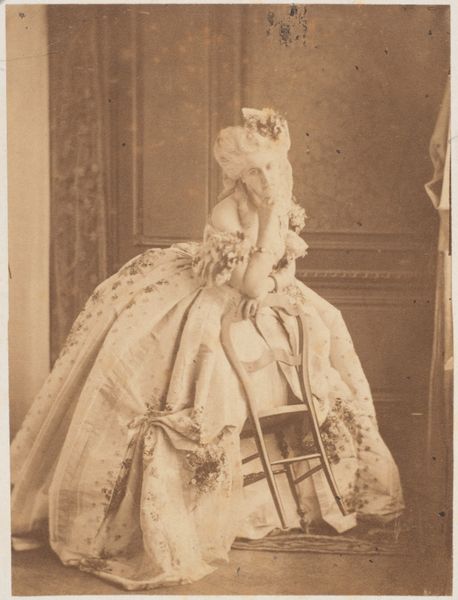
Copyright: Public Domain
Curator: Before us, we have a paper photograph, a portrait titled "Mathilde." Pierre-Louis Pierson created it sometime in the 1860s. Editor: The sepia tone lends a dreamy, almost theatrical air. And that gown! The sheer volume and floral embellishments speak volumes about status, obviously, but there's something else... a studied pose, perhaps? Curator: Indeed. Structurally, the composition is dominated by the sitter's enormous crinoline, creating a visual anchor that draws the eye. The contrasting textures—the smoothness of her face versus the fabric's intricate patterns—provide a satisfying tension. Consider, too, how the subdued tonality impacts the overall reading. Editor: It speaks of constraints, paradoxically. The expense involved in producing such a photograph and that incredible dress signals wealth, but also points to the societal expectations of women of that era. One can only imagine the labor and materials, the silk or perhaps even earlier synthetics, the dyes used for printing. Think about the photographer’s studio itself, a whole ecosystem of work behind a "simple" portrait. Curator: Your point resonates. The artist deliberately crafts an image playing with ideals of femininity within a framework dictated by socio-economic realities. Note the framing – how it centers Mathilde – further isolates her. This pictorial construction creates a kind of hyper-feminine object meant for visual consumption. Editor: Yes, and how aware she is of this consumption, she sits there completely rigid like a painted doll. It is all so artificial, even staged, but in terms of materiality, Pierson uses photography to almost democratize portraiture to a degree – extending its availability to an emerging middle class who want access to the aesthetic associated with aristocracy. It's an interesting dynamic of wanting to signal wealth through something that at its core becomes a less prohibitive status symbol due to its very nature. Curator: Intriguing thoughts! It highlights how even ostensibly "simple" artworks like this one carry immense art historical significance. Editor: Right, there is always so much going on with processes and what those details imply!
Comments
No comments
Be the first to comment and join the conversation on the ultimate creative platform.

